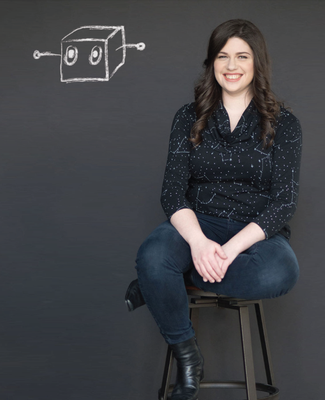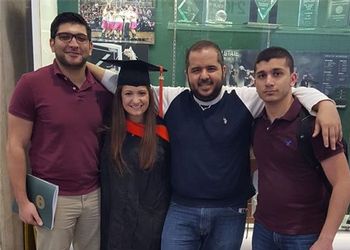So Smart It's Stupid: The Weirdness of AI

So Smart It's Stupid: The Weirdness of AI
April 1, 2022
With its titanic computational capacities, artificial intelligence has long outstripped the best human chess players. And in 2016 AI also trounced one of the top Go masters. A victory in the strategy board game, which dates back more than 2,500 years, was thought by many to be decades away. “We humans think chess and Go are difficult, and it’s prestigious to be good at them,” says AI researcher Janelle Shane, ’07. “But they are narrowly constrained problems where only so many things can happen. Compare that to something like folding laundry, which is an incredibly difficult and unsolved problem in machine learning, but not something we hold in high esteem.”
What would happen, wondered Shane, if you had an AI algorithm create names for house paint colors? She trained an algorithm on a set of commercial paint color names and let it rip.
Clardic Fug, Bank Butt, Stanky Bean and Rose Hork is what happened.
To be fair, there were some passable entries, like Barial Blue and Ice Gray (though the latter’s color swatch was olive green), but overall, Shane’s exercise cheekily showed some of the inherent limitations of a technology that affects our lives more and more. “Even the best AI on the market is about as smart as the autocorrect on your phone,” says Shane. “It’s a big business being done by very smart people using the latest technology, and it goofs up all the time.”
Shane’s approach to AI research combines humor and an educational component in ways that help audiences understand the fragility of the algorithms that play a part in deciding who gets a mortgage, choosing the ads we see online and even driving our cars.
“It’s a big business being done by very smart people using the latest technology, and it goofs up all the time.”
While AI algorithms can respond unexpectedly, Shane pointed out in a 2019 TED talk that the fault is often in the human. These algorithms have a knack for giving us what we’re asking for, even if we aren’t quite aware of it. “It can get really subtle. There’s a well-known case study from Amazon where they were using AI to do resume sorting for hiring, but they found the algorithm tended to weed out resumes from women,” Shane says. It turned out the algorithm had been trained on the resumes of current engineers, who were predominantly male. “There was no gender information in the resumes, but the AI figured out which applicants were women from extracurricular activities, like softball, the schools the applicants went to, even word choice.” The algorithm had reflected back at its designers the gender imbalance in the tech industry. The vetting program was scrapped.
Shane, who majored in electrical engineering, got her start with AI as a freshman, working with Erik Goodman. “I joined Dr. Goodman’s lab through the Honors College and it was great,” recalls Shane. “It was one of the things that brought me to MSU, because I could do that work right away. At other schools I would have had to wait.”
In January 2022, Shane was the inaugural Futurist in Residence at the Smithsonian Arts and Industries Building. In the spirit of the new year, she developed an algorithm that generated resolutions that visitors could print and take with them to act on if they wished (“Find a letter and read it to a tree.”), or not (“Have a conversation with a fork for a week.”). “It was really rewarding to work with the museum to do not just an experiment, but to collaborate on creating something for the museum visitors that was fun and had a hopeful theme for the future.”
WATCH SHANE’S 2019 TED TALK
Contributing Writer(s): Chris Quirk




